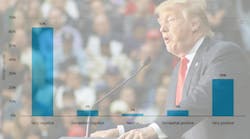Editor’s Comments: Seizing Opportunity
By Elizabeth Cutright
Change. The word got a lot of mileage in 2008, and for good reason. Could any of us have ever really predicted the events of last year? I’m not just talking about the presidential election or the meltdown of financial markets. After all, many predicted China’s Olympic aspirations would end in catastrophe, and, although it’s hard to remember now, back in March oil hit $110 a barrel for the first time. Now, as we look back on the last 12 months–and look forward to the next 12–it’s clear that many expectations were dashed, and a lot of unanticipated twists and turns have left us all wondering just what will happen next. Of course, it goes without saying that pondering life’s mysteries will not get us out of our various entanglements, action is what is needed–action and a plan.
Now, I’m not a big proponent of New Year’s resolutions, but I like the idea of New Year’s requests. Not so much asking what we will do for ourselves (and, by default, for our community), but enumerating what needs to be done and asking that everyone step up, grab a hammer, and get to work. In that vein, several groups involved in water efficiency and conservation have already drawn up their 2009 wish lists. And–unsurprisingly–many of those lists are making their way towards the White House.
First up, American Rivers sent out a statement in December, to the National Governors Association and President-elect Barack Obama, asking that the government make “green solutions for the nation’s water treatment systems, sewers, and levees a top economic stimulus priority that will save money, create jobs, and improve public safety.” As Betsy Otto, vice president for strategic partnerships at American Rivers, explains in a statement, “If the economic stimulus plan doesn’t include significant investments in green solutions for our water infrastructure needs, a once-in-a-century opportunity will be lost.” It’s more than opportunity that’s at stake. Our infrastructure is a mess. We’ve seen footages of sinkholes and collapsed bridges, but that’s only the tip of the iceberg. Aging sewer systems, crumbling levees, and outdated information systems, all demanding attention at a time when climate change threatens to bring even more severe weather to our shores.
The fix will not come cheap. The National Governors Association proposed $15.2 billion for infrastructure investments in 2008, but the EPA puts the total price tag at somewhere closer to $277 billion–with the cost of doing nothing even higher. And, while the folks at American Rivers are pinning their hopes on “green” infrastructure as a way to stretch our infrastructure dollar, the truth is we need to avoid wrapping funding requirements in a mantel of politically correct rhetoric. Clearly, there are benefits from incorporating low-impact, environmentally friendly solutions whenever possible: river filtration, constructed wetlands, and green roofs come to mind.
But that’s just a start, and there’s a lot more gritty, mundane work that needs to be done. The American Water Works Association’s publication “A National Agenda for Drinking Water” gets down to the brass tacks of the issue (www.awwa.org/files/GovtPublicAffairs/PDF/Transition.pdf). Jointly released with the Association of Metropolitan Water Agencies, National Association of Water Companies, and the National Rural Water Association, and developed to assist the incoming presidential administration, “A National Agenda for Drinking Water” is broken down into several topics: economic stimulus, long-term infrastructure investment, drinking water standards, source water protection, climate change, and system security.
In December 2008, Obama revealed an ambitious infrastructure plan, promising to “create millions of jobs by making the single largest new investment in our national infrastructure since the creation of the federal highway system in the 1950s.” Taking this statement to heart, the four groups behind “A National Agenda for Drinking Water” use their report to make the case for the inclusion of water infrastructure investment in any plan devised by the incoming administration. But the report does not stop there, it lays out specific recommendations, including:
- Dedicated funding within the economic stimulus package for drinking water infrastructure improvements
- Federal assistance to utilities, including a fully funded Drinking Water State Revolving Loan Fund program and US Department of Agriculture Rural Water Loan and Grant program ($1 billion each), an “infrastructure ban,” and a limit on any federal water taxes, charges, or levies against local water systems or their customers
- Deliberative, science-based regulatory processes outlined in the Safe Water Drinking Act to set health standards while rejecting “legislative prescriptions”
- Source water protection, including revisions to the Clean Water Act, enforcement of the conservation authorities under the Farm Bill, and research for the “sources, treatment, and human health effects associated” with water pollution, including personal care and pharmaceutical products
- Climate change research and adaption, including dedicated funding to “assess the impacts of climate change on drinking water resources and to assist drinking water facilities in
adapting to climate change” - Water system security, including new federal security mandates and a streamlining and formalization of how water utilities deal with disinfection, shutdowns, and federal agencies
The report concludes by stating that, although there are a variety of ways to implement the recommendations, “All should be viewed as an investment in America’s future.” That’s really what’s called for right now, a commitment by one and all to continue to safeguard our water resources and to make sure safe, affordable drinking water is available to everyone. We must act now, and not just because we’ve got nothing left to lose, but because we’ve got everything to gain. We can’t cower as the NASDAQ tumbles, and the nightly news revels in each unemployment statistic. Instead of being frightened by the fluctuations in the stock market and the “for sale” signs popping up in every neighborhood, we need to look adversity straight in the eye and say, “you don’t scare me.”
And that’s just what I plan to do. You with me?

